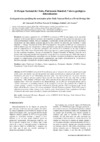Identificador persistente para citar o vincular este elemento:
https://accedacris.ulpgc.es/jspui/handle/10553/1070
| Campo DC | Valor | idioma |
|---|---|---|
| dc.contributor.author | Carracedo, J.C. | en_US |
| dc.contributor.author | Perez-Torrado, Francisco-Jose | en_US |
| dc.contributor.author | Rodriguez-Badiola, Eduardo | en_US |
| dc.contributor.author | Socorro Hernández, Juan Sergio | en_US |
| dc.date.accessioned | 2009-10-08T02:31:00Z | - |
| dc.date.accessioned | 2018-02-21T14:36:40Z | - |
| dc.date.available | 2018-02-21T14:36:40Z | - |
| dc.date.issued | 2008 | en_US |
| dc.identifier.issn | 1567-5172 | en_US |
| dc.identifier.other | 2069 | - |
| dc.identifier.uri | https://accedacris.ulpgc.es/handle/10553/1070 | - |
| dc.description.abstract | Los países signatarios de la UNESCO se dotaron en 1972 de una figura con la que poder registrar la diversidad cultural y natural a nivel mundial, recopilando lo más selecto de cada país en una Lista del Patrimonio Mundial. Para ser nominado y confirmado, un sitio debe tener un valor universal y excepcional, así como cumplir al menos uno de los diez criterios de selección, seis culturales y cuatro naturales. El Parque Nacional del Teide (PNT) ha logrado la inscripción en 2007 por su extraordinaria belleza natural y por sus excepcionales valores geológicos, que aportan evidencias de suma importancia para la comprensión de los procesos geológicos que ocurren en la evolución de las islas oceánicas (criterios VII y VIII). Estos extraordinarios valores geológicos se explican porque dentro del volcanismo de islas oceánicas intraplaca, a la que corresponden los Parques Nacionales de Hawaii y Tenerife, en el primero sólo están representados los magmas de la serie tholeítica, mientras que en el PNT está completa la serie alcalina. Esta diferencia, consecuencia de sus distintos escenarios geodinámicos, hace que ambos parques se complementen, proporcionando conjuntamente una amplia representación de los productos, procesos y paisajes volcánicos de las islas oceánicas del planeta. | en_US |
| dc.description.abstract | : In 1972 UNESCO created the World Heritage List to “preserve the world’s superb natural and scenic areas and historic sites for the present and future generations of citizens of the entire world”. Nominated sites must be of “outstanding universal value” and meet at least one out of ten selection criteria, six cultural and four natural. Spain has 40 sites inscribed in the List, only three of them (Garajonay, 1986; Doñana, 1994 and Teide, 2007) selected on the basis of natural criteria. The Teide National Park (TNP) was inscribed in the World Heritage List in 2007 for its natural beauty and its “global importance in providing evidence of the geological processes that underpin the evolution of oceanic islands” (criteria vii and viii). Volcanism in Tenerife and the TNP correspond to the Ocean Island Alkali Basalts, whereas the already nominated Hawaii Volcanoes National Park (1987), from a different geodynamic setting, belongs to the Tholeitic series. Both National Parks complement each other to represent the entire range of products, features and landscapes of oceanic islands. | en_US |
| dc.language | spa | en_US |
| dc.relation | CGL2005-00239/BTE (CICYT) | en_US |
| dc.relation.ispartof | Geotemas (Madrid) | en_US |
| dc.source | Geotemas [ISSN 1567-5172] ,v. 10, p. 1303-1306. | en_US |
| dc.subject | 250621 Vulcanología | en_US |
| dc.subject.other | Parque Nacional del Teide (Tenerife) | en_US |
| dc.subject.other | Patrimonio geológico | en_US |
| dc.subject.other | España | en_US |
| dc.subject.other | Patrimonio Mudial UNESCO | en_US |
| dc.title | El Parque Nacional del Teide, Patrimonio Mundial: Valores geológicos determinantes | en_US |
| dc.title.alternative | Geological values justifying the nomination of the Teide National Park as a World Heritage Site | en_US |
| dc.type | info:eu-repo/semantics/conferenceObject | en_US |
| dc.type | conferenceObject | en_US |
| dc.relation.conference | VII Congreso Geológico de España | en_US |
| dc.identifier.absysnet | 553593 | - |
| dc.identifier.crisid | -;164;-;- | - |
| dc.description.lastpage | 1306 | en_US |
| dc.description.firstpage | 1303 | en_US |
| dc.relation.volume | 10 | en_US |
| dc.investigacion | Ciencias | en_US |
| dc.rights.accessrights | info:eu-repo/semantics/openAccess | es |
| dc.type2 | Actas de congresos | en_US |
| dc.description.numberofpages | 4 | en_US |
| dc.utils.revision | Sí | en_US |
| dc.identifier.supplement | -;164;-;- | - |
| dc.identifier.supplement | -;164;-;- | - |
| dc.identifier.supplement | -;164;-;- | - |
| dc.identifier.supplement | -;164;-;- | - |
| dc.identifier.supplement | -;164;-;- | - |
| dc.identifier.supplement | -;164;-;- | - |
| dc.identifier.ulpgc | Sí | en_US |
| dc.contributor.buulpgc | BU-BAS | en_US |
| item.grantfulltext | open | - |
| item.fulltext | Con texto completo | - |
| crisitem.author.dept | GIR IUNAT: Geología de Terrenos Volcánicos | - |
| crisitem.author.dept | IU de Estudios Ambientales y Recursos Naturales | - |
| crisitem.author.dept | GIR IUNAT: Geología de Terrenos Volcánicos | - |
| crisitem.author.dept | IU de Estudios Ambientales y Recursos Naturales | - |
| crisitem.author.dept | Departamento de Física | - |
| crisitem.author.orcid | 0000-0002-4282-2796 | - |
| crisitem.author.orcid | 0000-0002-4644-0875 | - |
| crisitem.author.parentorg | IU de Estudios Ambientales y Recursos Naturales | - |
| crisitem.author.parentorg | IU de Estudios Ambientales y Recursos Naturales | - |
| crisitem.author.fullName | Carracedo Gómez, Juan Carlos | - |
| crisitem.author.fullName | Pérez Torrado, Francisco José | - |
| crisitem.event.eventsstartdate | 14-07-2008 | - |
| crisitem.event.eventsenddate | 18-07-2008 | - |
| Colección: | Actas de congresos | |
Visitas
112
actualizado el 15-jun-2024
Descargas
657
actualizado el 15-jun-2024
Google ScholarTM
Verifica
Comparte
Exporta metadatos
Los elementos en ULPGC accedaCRIS están protegidos por derechos de autor con todos los derechos reservados, a menos que se indique lo contrario.
